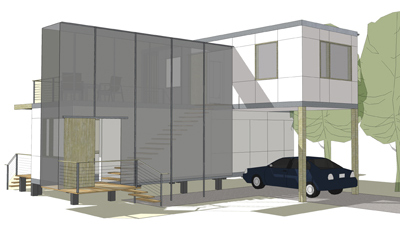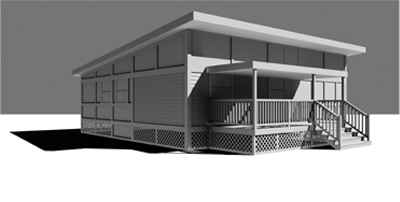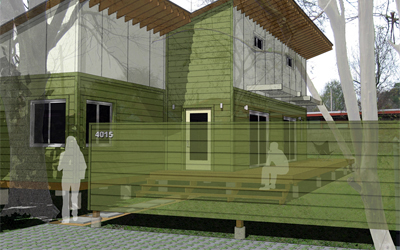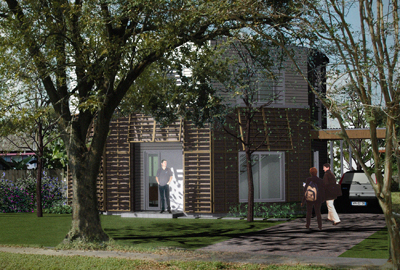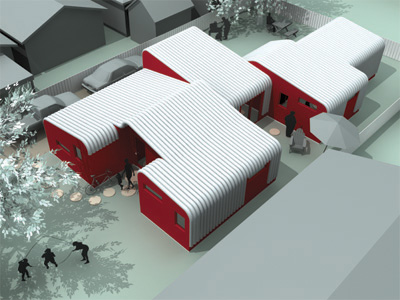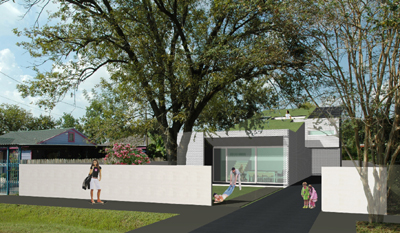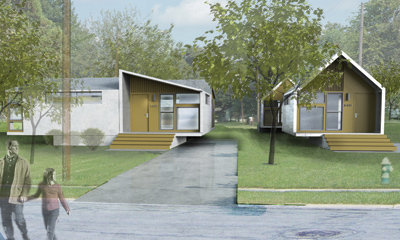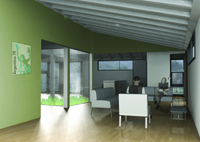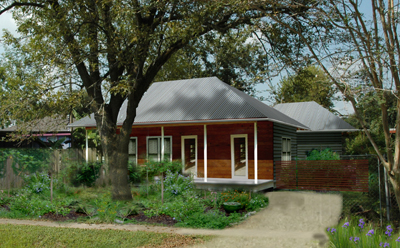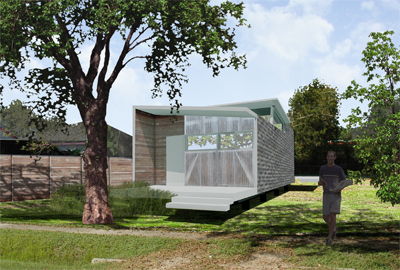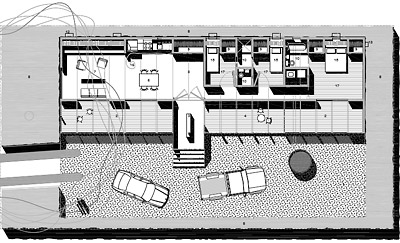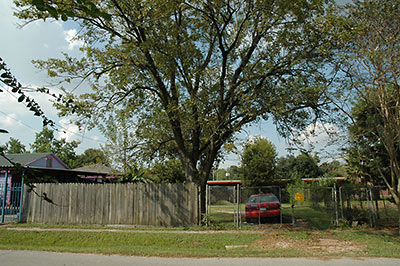
One day before an exhibition of design-competition entries at the Architecture Center Houston Downtown closed last month, the Rice Design Alliance and the Houston chapter of the AIA held a groundbreaking ceremony at 4015 Jewel St. in the Fifth Ward. The winning entry of the $99K House Competition, designed by Seattle architecture firm Hybrid/ORA, will be built on that site by contractor D.H. Harvey and sold or auctioned through the Tejano Community Center.
The competition, held early this year, was meant to produce a prototype for “sustainable, affordable” homes of 1,400 sq. ft. or less that could be built on lots made available through the city’s Land Assemblage Redevelopment Authority. The Jewel St. site was donated by LARA.
The exhibition featured 66 selected entries to the competition, out of a total of 184 submitted. Images of those entries are included in the exhibition catalog.
Swamplot featured one kudzu-wrapped competition entry back in February. Beginning tomorrow, we’ll feature a few other entries received in response to a general request for Swamplot-ready versions recently sent to the participant email list that was conveniently added to the competition website.
(Note to competition participants who somehow didn’t receive a request from us: If you’d like to send in your entry, please email Swamplot and we’ll send you a list of requirements.)
Update: Entries in this series are now on this page.
Photo of 4015 Jewel St.: Jonathan LaRocca [license]
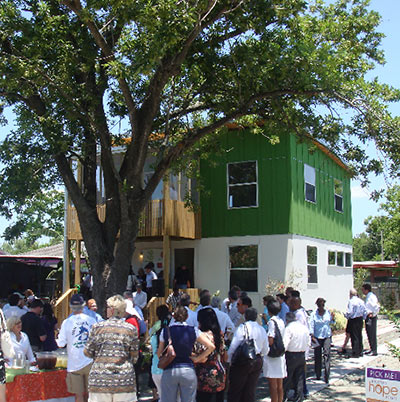
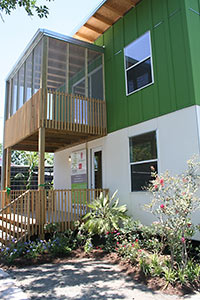 How’d that $99k house project turn out? One reader tells Swamplot he’s impressed that a custom-designed house that “may be LEED accredited” could be completed for that price:
How’d that $99k house project turn out? One reader tells Swamplot he’s impressed that a custom-designed house that “may be LEED accredited” could be completed for that price:

